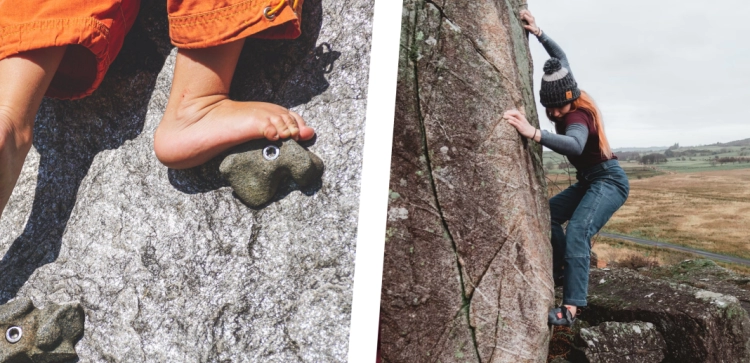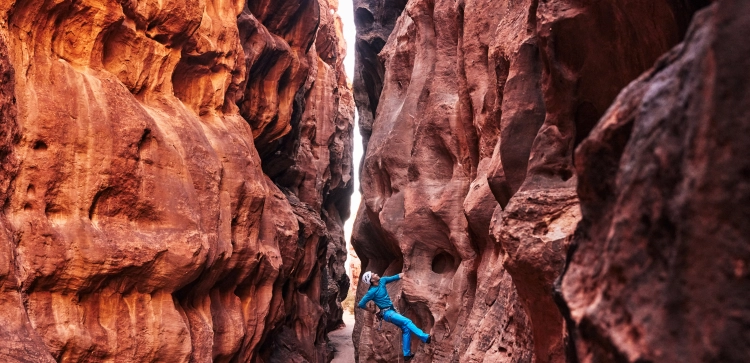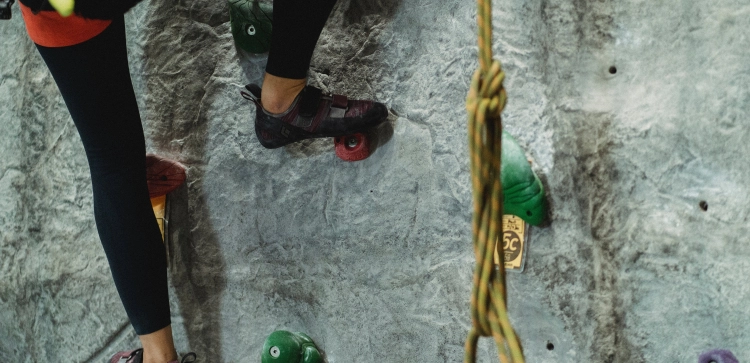How Experienced Climbers Conquer Different Rock Types - Mastering The Diversity

Hey fellow climbers! Today, I'm stoked to share some insights that go beyond the basics and cater to those of us who've spent enough time hanging off the rock face. Whether you're into granite, limestone, sandstone, or any other rock type, these advanced tips will elevate your climbing game and make each ascent a thrilling challenge.
Embrace the Unpredictability of Granite
Granite, with its coarse texture and unpredictable cracks, demands a unique set of skills. For experienced climbers, it's all about reading the rock. Instead of just jamming your hands into every crack, analyze the subtle nuances. Optimize your movements by spotting the micro-features that less experienced climbers might overlook.
Mastering granite involves adapting to the varied surfaces. Smearing becomes an art, and precision is key. Trust your instincts, and let muscle memory guide your body through the intricate dance with the granite beast. Footwork is paramount here – use those climbing shoes like extensions of your own feet, feeling every inch of the rock beneath you.
Dance on Limestone: Precision and Flow
Limestone crags beckon with their smooth, pocketed surfaces. To truly dance up a limestone wall, you need to hone your precision and flow. Rather than just grabbing holds, anticipate your movements. Visualize the route, plan your sequence, and execute with fluidity.
Experienced climbers know that on limestone, it's not just about power – it's about finesse. Use those pockets strategically, focusing on economy of movement. Engage your core, trust your foot placements, and maintain a rhythmic pace. This isn't a sprint; it's a dance where every step is deliberate, and every move is calculated.
Sandstone Mastery: Respect the Fragility
Sandstone – beautiful yet delicate. Experienced climbers understand the fragility of this rock type. Your touch matters. Distribute your weight evenly, avoiding unnecessary stress on fragile holds. The key is to finesse your way up, rather than muscling through.
In sandstone areas, technique triumphs over brute strength. Opt for controlled movements, and be mindful of your surroundings. The rock can be prone to erosion, so be a steward of the climbing environment. Ascend with respect, leaving the rock as untouched as possible for the next climber.
Crack Climbing on Every Terrain
Crack climbing is an art that transcends rock types. Seasoned climbers relish the challenge of cracks – be they in granite, sandstone, or any other formation. The secret? Efficient jamming techniques. Instead of powerfully jamming your hands into every crevice, focus on finding the perfect fit for your limbs.
Hand and foot jams become second nature for experienced crack climbers. Don't fear the squeeze; embrace it. Use your legs to take weight off your arms, and trust in the jam. The crack is your ally, not your adversary.
Technical Face Climbing: Trust Your Feet
Technical face climbing demands a different mindset. Experienced climbers shift their focus from the hand holds to the feet. Trusting those tiny edges and smears is essential. It's about balance, body positioning, and committing to movements with precision.
On faces with sparse holds, technique reigns supreme. Advanced climbers utilize their strength judiciously, saving it for the crucial moments. Develop a keen eye for micro holds, and use your body like a well-tuned instrument, harmonizing with the rock to ascend gracefully.
Adapt to Unconventional Rock Features
Experienced climbers thrive on unconventional challenges. Whether it's a rock covered in tufas, or unique geological features, adaptability is the key. Learn to read the rock on the fly, adjusting your climbing style to the specific characteristics of the terrain.
Consider each climb as a puzzle waiting to be solved. Experienced climbers revel in the mental aspect of decoding new challenges, finding innovative solutions, and pushing their limits on uncharted rock.
To Summarize
In conclusion, for those of us who have spent countless hours suspended on rock faces, the journey is about continual improvement and mastering the intricacies of each climb. Every ascent is a canvas, and we, as experienced climbers, are the artists creating our masterpieces.













